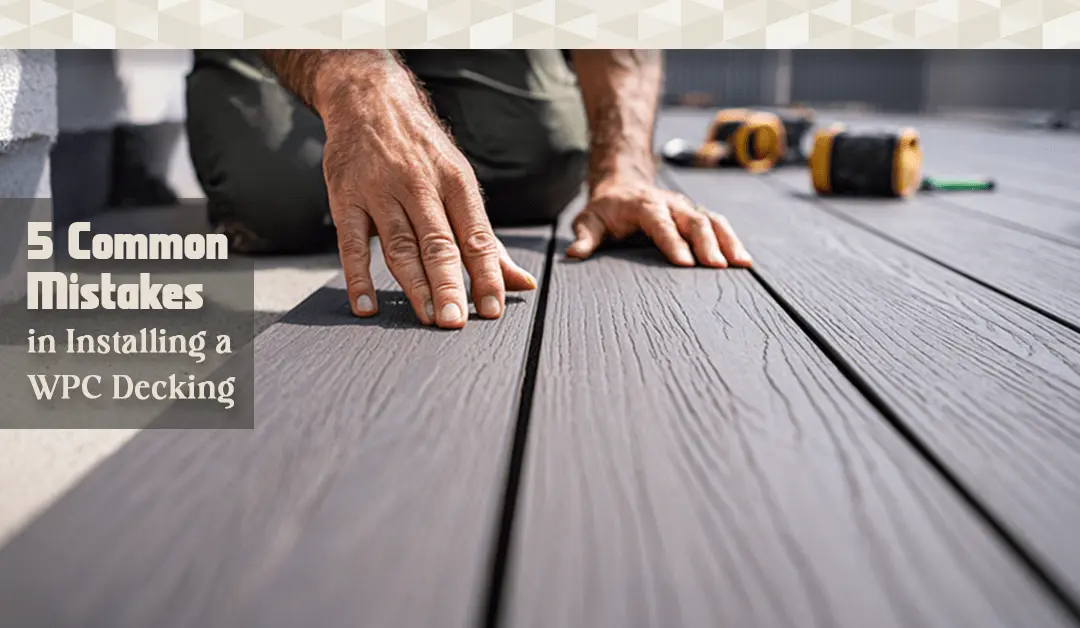Wood-Plastic Composite (WPC) decking is quickly becoming the go-to choice for outdoor flooring in India — and for good reason. It’s low-maintenance, water-resistant, and gives a premium wooden finish without the headache of traditional wood decking.
However, here’s the catch: even the most durable flooring can disappoint if it’s not installed correctly.
In our 15+ years of writing about wooden flooring (and seeing some real horror stories!), we’ve found that installation is where most people go wrong with WPC deck flooring. So, before you break out your toolbox or call your local contractor, here are 5 common mistakes you must avoid.
1. Ignoring Surface Preparation
Let’s start with the most overlooked step — prepping the surface.
WPC decking might seem forgiving, but it still needs a solid and level base to sit on. Installing directly over uneven ground, loose soil, or an unclean surface can lead to sagging, wobbling, or even cracking over time.
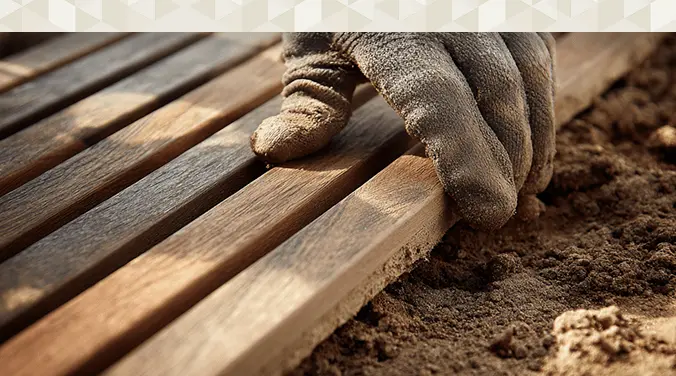
Real Talk:
We’ve seen people lay their WPC decking right over sand and call it a day. A few monsoons later, half the deck had sunk.
How to avoid this:
- Ensure the subfloor is clean, dry, and level.
- Use a concrete base or a properly compacted gravel layer.
- Never skip this step, thinking you’ll “fix it later.”
2. Improper Spacing Between Planks
WPC expands and contracts in response to temperature changes, just like any other material exposed to the elements. If you don’t leave proper expansion gaps, you’re inviting trouble.
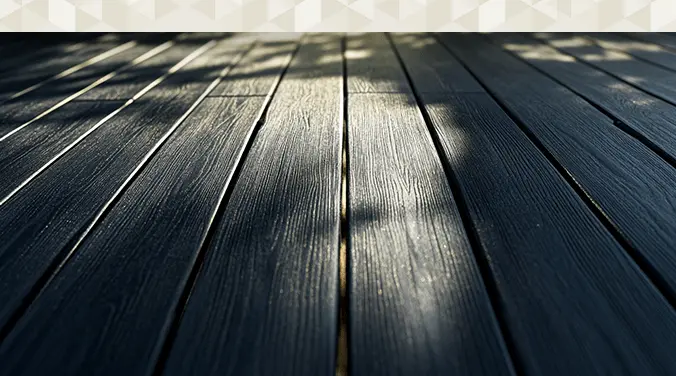
The Issue:
Too-tight spacing leads to buckling, while too-wide gaps create unsightly spaces that trap debris and allow water seepage.
Pro Tip:
Follow the manufacturer’s recommended spacing, typically around 5–7 mm between planks and 10–12 mm from walls or other fixed structures.
Always install planks when the weather is moderate. Avoid doing it in extreme heat or cold.
3. Using the Wrong Fastening Method
Not all screws are created equal — especially when it comes to WPC decking.
One of the most common mistakes is using regular wood screws or nails instead of the appropriate deck clips or hidden fasteners.
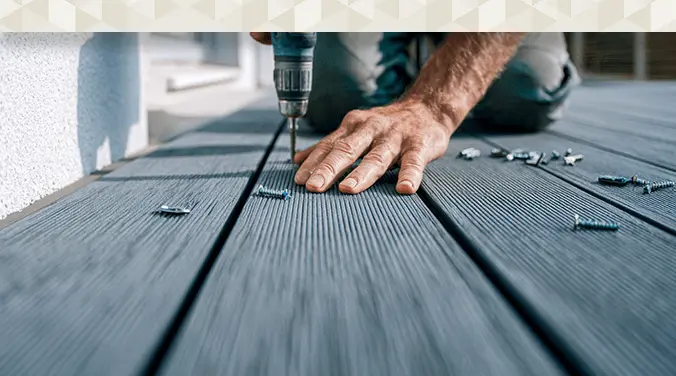
What happens then?
- Screws can loosen or rust over time.
- The surface ends up looking unpolished.
- It reduces the lifespan and can void the warranty.
Fix it like a pro:
Always use the manufacturer’s recommended fastening system.
Hidden fasteners not only look cleaner but also allow for better expansion and contraction of the material.
4. Skipping Waterproofing or Drainage Planning
Yes, WPC is water-resistant, but your deck still needs to breathe.
A huge installation blunder is ignoring water runoff. Standing water or poor drainage can lead to mold, warping, and rot in the underlying structure.
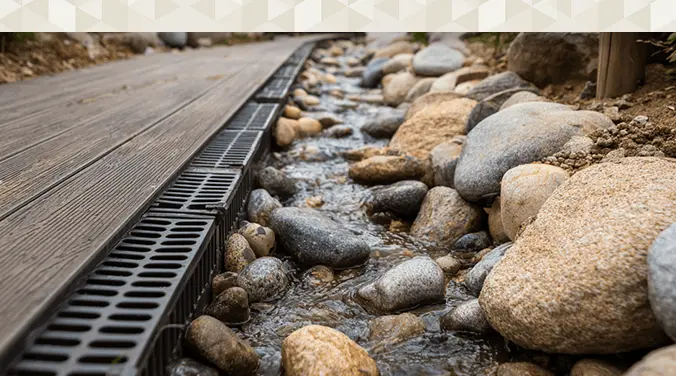
Don’t let this happen to you:
- Slope the deck away from the house for natural water drainage.
- Ensure there’s clear access to drainage outlets — don’t block them with deck planks.
- Avoid creating enclosed spaces beneath the deck without ventilation.
- Think of it this way: WPC can handle water, but water still needs an exit.
5. Lack of Professional Supervision or DIY Overconfidence
Let’s be honest — installing a WPC deck is not as easy as snapping together LEGO pieces.
Yes, it’s a DIY possibility, but it’s also very easy to go wrong if you’re not familiar with power tools, levelling tools, or decking design principles.
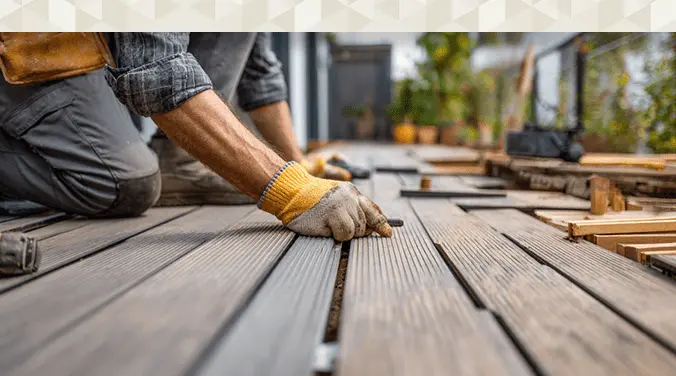
What goes wrong:
- Misaligned planks
- Inconsistent spacing
- Poor anchoring
- Safety hazards
Our advice?
If you’re not 100% confident, hire a professional — or at least consult one before you begin. The cost of professional supervision is way cheaper than redoing the entire deck.
Bonus Tip: Maintenance Mistakes to Avoid After Installation
- You’ve installed your dream WPC deck — great! But hold on.
- Don’t drag furniture across the surface — it may scratch.
- Clean it with a mild soap and water, not harsh chemicals.
- Sweep it regularly to avoid dirt buildup between the grooves.
Think of your WPC deck like a good car — low maintenance, but not zero maintenance.
Also Read: https://www.lamiwood.in/blog/how-to-install-deck-flooring/
FAQ
Q1. Can I install WPC decking by myself?
Yes, you can, but only if you’re handy with tools and follow the manufacturer’s installation guide precisely. For larger spaces or more intricate designs, professional help is highly recommended.
Q2. How long does WPC deck flooring last?
When installed and maintained properly, WPC decking can last 15–25 years. Its durability is one of the main reasons homeowners choose it.
Q3. Does WPC decking get hot under the sun?
WPC can get warm, especially in dark colors, but it typically doesn’t retain heat as much as pure plastic decks. Use rugs or shaded areas for added comfort in peak summers.
Q4. Is waterproofing necessary for WPC decking?
The planks themselves are water-resistant, but drainage and water management are still essential to protect the substructure and prevent water accumulation.
Q5. How do I clean and maintain WPC decking?
Use a soft brush, mild detergent, and water to clean the deck. Avoid abrasive tools and bleach-based cleaners.
Final Thoughts
Installing WPC deck flooring isn’t rocket science, but it does require some serious attention to detail. From prepping the base to choosing the right fasteners and planning for water drainage, each step affects the final result.
By avoiding these 5 common mistakes, you’re not just saving time and money — you’re ensuring that your outdoor space remains beautiful, durable, and hassle-free for years to come.
And if you’re ever in doubt? Call in a pro. It’s always cheaper than fixing a DIY disaster.
For a free consultation, reach out at 91+9999500117 Or drop us an email at Info@lamiwood.in

